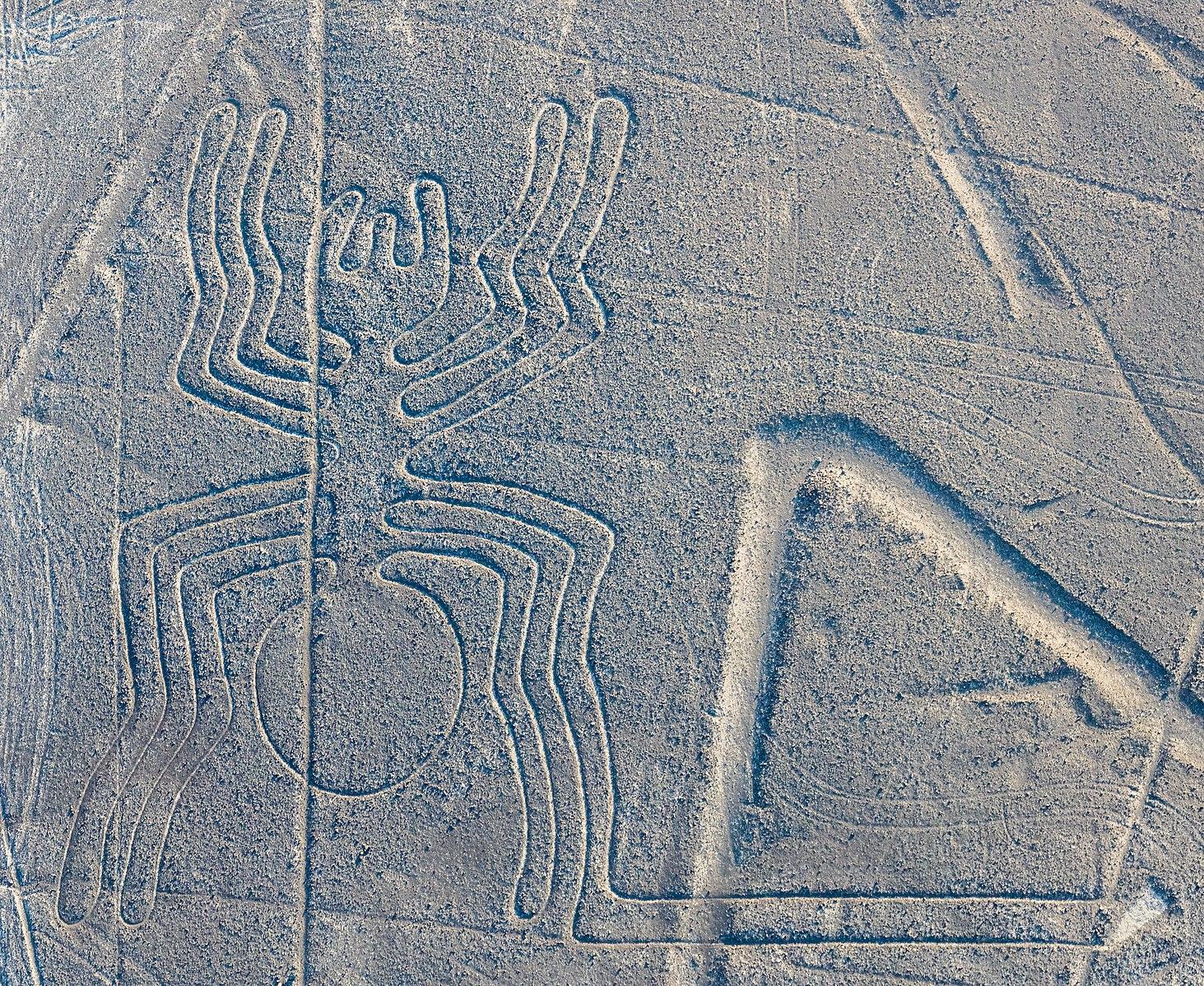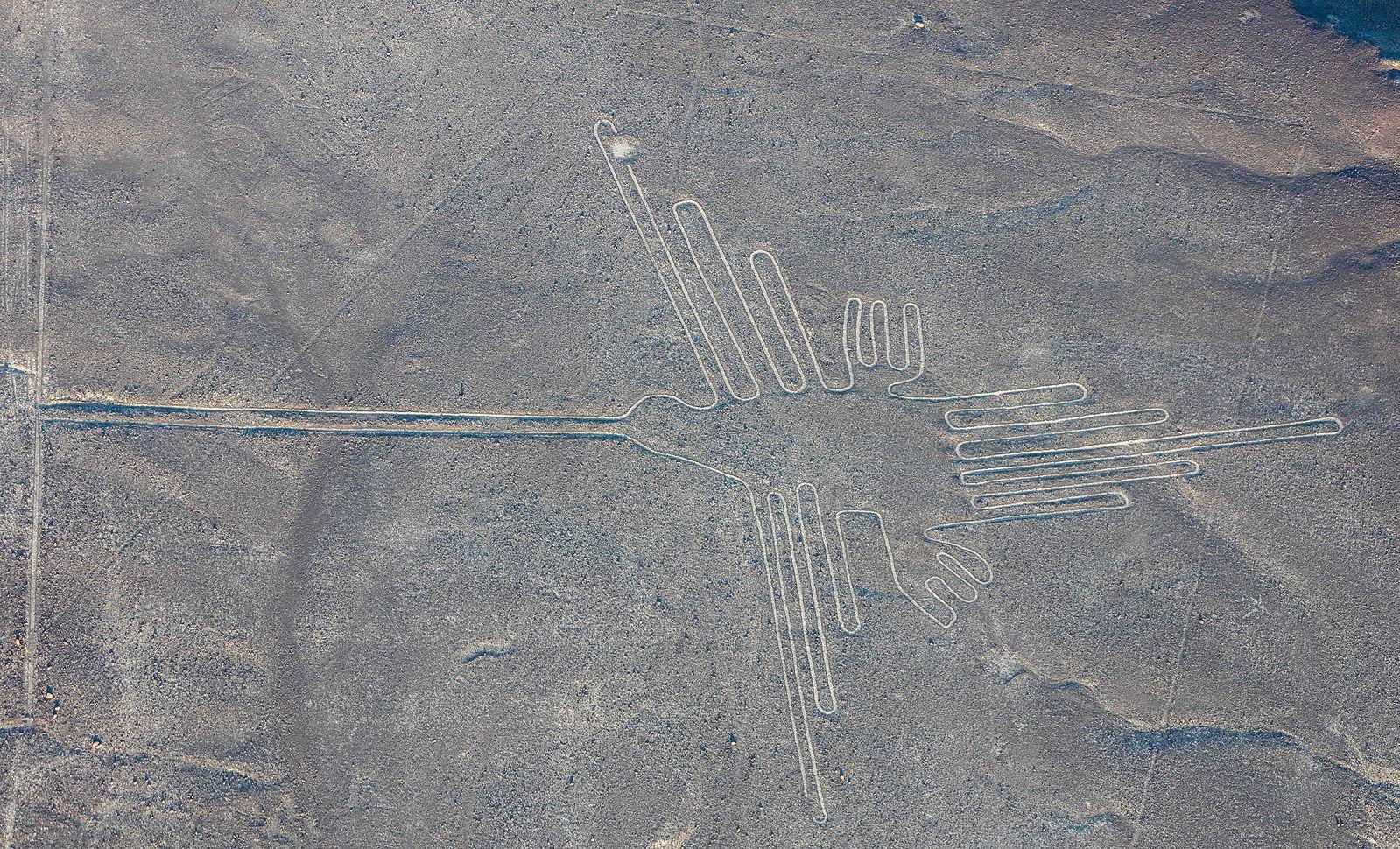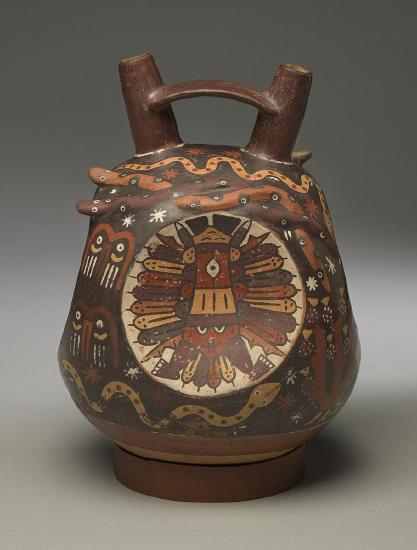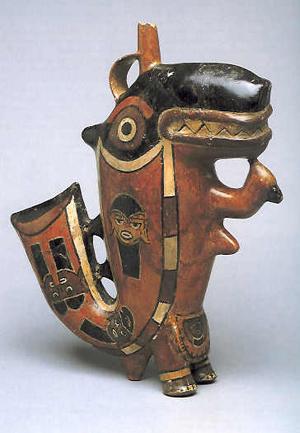5.7: Nazca (100 BCE – 800 CE)
- Page ID
- 31763
The Nazca lived in the river valleys of the mountains along the coast of Peru, a civilization flourishing on the high desert plateau in a city called Cahuachi—the line builders. Cahuachi was the ceremonial center of the Nazca people between 1 CE and 400 CE, where they drew geoglyphs on the desert floor, visible only from other mountains or in the air. The giant geoglyphs are 15cm deep grooves cut into the brown, dry dirt, remarkedly the grooves never crossing over each other. The geoglyphs were stylized with an unknown meaning, as seen in the spider (5.27) or the hummingbird (5.28).


The large glyphs resemble animals found on the pottery the Nazca created. The Nazca molded double spouted bottles, vases, bowls, and cups based on mythical creatures similar to the lines in the desert, adorning the pottery with visual depictions of the creatures. The double spouted bottle of polychrome pottery (5.29) beautifully decorated has a limited base palette of multiple hues, the unique creature (5.30) painted with the same colors. The Nazca were skilled artists and also known for their intricately woven textiles. Yarn spun from the wool of the alpaca and llama or cotton was woven on a back-strap loom similar to how artisans weave today.




